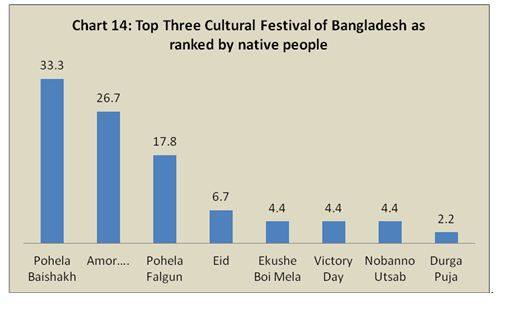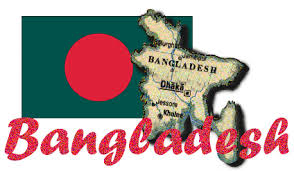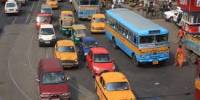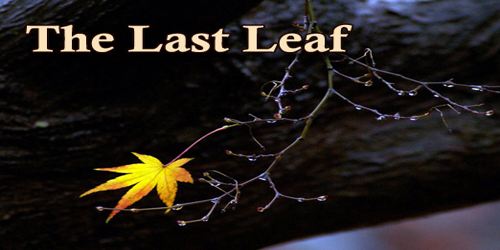Culture & Heritage:
Culture refers to the cumulative deposit of knowledge, experience, beliefs, values, attitudes, meanings, hierarchies, religion, notions of time, roles, spatial relations, concepts of the universe and material objects and possessions acquired by a group of people in the course of generations through individual and group striving.
Each living life is attached in culture whether humans or animals. Culture is natural development during birth process {What we call is behavior, that changes from individual to individual broadened when lives in family that family is part of a society (group or community), behavior of the group is culture) and its evolution is based on intelligence reaction to experiences and needs. Culture is process to live in group. Each society has norms to follow by individuals in order to retain society strong and intact. Culture is a process for identity of living creatures and cultural evolution raises the identity of society, benefit goes to its individuals. Culture differentiates from group to group (as behavior changes) though major part remains same as human culture to differentiate from other species. This gives different identity.
For society’s culture there is one individual behind who broadens or establishes the cultural status. Culture developed by beliefs, faith, practices, customs , way to live, art, intelligence, language, food habits, and economy etc; Cultural growth gave identity to the societies that named, Muslim or Christian or Hindu or Jewish or Buddhist etc; have different cultures. So when we come across art, customs etc; we identify what is their culture or which religion they belong.
Culture influences many aspects of our life, private and public, from foreign affairs to love affairs. It certainly influences various factors that on various levels and through separate mechanisms contribute to create a phenomenon known as nation branding.
Anholt regards culture in triple role:
- Source of value,
- Communicator of value and
- Revenue earner.
He argues that culture provides or even constitutes the “third dimension”. In other words, he claims nation branding is all about the culture as without it the arena shrinks and fades to
resemble merely a ‘normal’ commercial branding. He also calls for focusing on culture in country promotion and opposes the relegated status of culture as ‘not-for-profit activity, kind of charitable obligation within the overall promotion of a country.
Cultural aspects measured are perceptions of a country’s heritage, its contemporary cultural “vibes” from music, films, art and literature, as well as the country’s excellence in sports. Various cultural activities are presented to respondents to gauge their strongest images of a country’s cultural “product”
Culture of Bangladesh:
Bangladesh has a rich, diverse culture. Its deeply rooted heritage is thoroughly reflected in its architecture, dance, literature, music, painting and clothing. The three primary religions of Bangladesh (Islam, Hinduism, and Buddhism) have a great influence on its culture and history.
The people of Bangladesh have a rich fictional legacy, with the first available form fo literature being over a thousand years old. Bengali literature developed considerably during the medieval period with the rise of popular poets such as Chandi Das, Daulat Kazi an Alaol.
The traditional music of Bangladesh is very much the same as that of the Indian sub-continent. The music in Bangladesh can be divided into three main categories: classical, modern and folk. Most prevalent fo folk songs and music traditions include Bhatiali, Baul, Marfati, Murshidi and . Lyricists like Lalon Shah, Hason Raja, Kangal Harinath, Romesh Shill, Abbas Uddin lead many unknown anonymous lyrists have enriched the tradition of folk songs of Bangladesh. In relatively modern context, Rabindra Sangeet and Nazrul geeti form precious cultural heritage of Bangladesh. Both bocal and instrumental classical music is enjoyed in Bangladesh. Ustad Ayet Ali Khan and Ustad Alauddin are two famous classical instrumental players that are internationally known. Modern music is becoming more popular and is practiced widely. Contemporary, pop songs and bands are also enjoying more widespread fame.
Several musical instruments, some of them fo indigenous origin, are used in Bangladesh, and major musical instruments used are bamboo flute (banshi), drums (dole), a single stringed instrument named extra, a four stringed instrument called dotara, a pair fo metal
bawls used for rhythm effect called mandira. Currently, several musical instruments fo western origin like guitar, drums and saxophone are also used, sometimes alongside the traditional instruments.
Tribal dances are very popular among the Bangladeshis. The countryside girls are in the habit of dancing to popular folk music. Their dances require no regulations are such, just a small amount of courage and a big amount of rhythm. Popular songs like Shari and Jari are presented with the accompanying dace fo both male and female performers.
Another important aspect of the culture fo Bangladesh is clothing. Bangladeshi woman usually wear Saris marie of the world famous and expensive. Finely embroidered quilted patchwork cloth produced by the village woman. Woman will traditionally wear their hair in a twisted bun, which is called the “Beni style”. Hindus will traditionally wear Dhuty for religious purposes. These days most men of Bangladesh wear shirts and pants.
Bangladesh has a history. The land, the rivers and the lives of the common people formed a rich bent age with marked differences from neighboring regions. It has evolved over the centuries and encompasses the cultural diversity of several social groups of Bangladesh.
Festivals and celebrations:
Festivals and celebrations are integral part of the culture of Bangladesh. Prominent and widely celebrated festivals are Pohela Baishakh, Language Movement Day, Independence Day, National Mourning Day, Eid-ul-Fitr, Eid-ul-Azha, Muharram, and Durga puja.
Pohela Boishakh:
Pohela Boishakh is the first day of the Bangla calendar. It is the festival that is celebrated by the people of all religions. In today’s Bangladesh, the festival is gaining prominence, which is not related to religion. It is observed with great enthusiasm on the first day of Baisakh. Its main characteristic is that it is a social festival and its appeal is universal.
It is usually celebrated on the 14th of April. Pohela Boishakh marks the start day of the crop season. The most colorful New Year’s Day festival takes place in Dhaka. Large numbers of people gather early in the morning under the banyan tree at Ramna Park where Chhayanat artists open the day with Rabindranath Tagore’s famous song, Esho, he Boishakh, Esho Esho.
Social and cultural organizations celebrate the day with cultural programs. Newspapers bring out special supplements. There are also special programs on radio and television. Prior to this day, special discounts on clothes, furniture, electronics and various deals and shopping discounts are available. Special line of sarees, usually cottons, and white sarees with red print/embroidery is sold before this day as everyone dresses up for this day. Jasmine flowers are also a huge sale for this event which adorns the women’s hair.
Most colorful day long gatherings along with arrangement fo cultural program and traditional Panta at Ramna Park, Dhaka are a special feature of Pahela Baishakh. Tournaments, boat races etc. are held in cities and villages amidst great jubilation. Many fairs are held in Dhaka and other towns and villages.
The Halkhat function, observed mainly by the merchant community, is still in yogue on the occasion fo Pahela Baisakh. The merchants complete their accounts of the previous year on the eye or New Year’s Day. On this day, the customers pay some advance and the merchants treat them with sweetmeats. There are some who prepare better quality food, including sweetmeats, on the occasion of the New Year’s Day.
Language Movement Day:
Language Movement Day is a unique part of the culture of Bangladesh. Every year on February 21 this day is observed to pay tribute to the martyrs who sacrificed their lives to establish Bengali as the official language of then East Pakistan in 1952. The mood of the day is sad and humble.
The celebration of Language Movement Day goes on the entire month of February. Ekushey book fair is a book fair arranged to mark this occasion every year. The fair has also become an integral part of the culture of Bangladesh. Authors and readers in Bangladesh eagerly await the fair each year.
To honor this movement, Shaheed Minar, a symbolic sculpture, was erected in the place of the massacre. Today the Shaheed Minar is the centre of cultural activities in Dhaka. On the morning of February 21 each year, people from all walks of life including the nationalleaders pay tribute to the martyrs by leaving flowers at Shaheed Minar. A very melodious and melancholy song, Amar Bhaier Rokte Ranano, written by Abdul Gffar choudhury and composed by Altaf Mahmud, is played pepeatedly in electronic media and cultural
gatherings throughout the month, and especially on February 21. This song, too, has become a symbolic mark of culture of Bangladesh. In 1999, UNESCO declared the day as ‘International Mother Language Day’ and is observed the day though out the world.
Independence Day:
One of the main state festivals in Bangladesh is ‘Independece Day’. The day is observed on 26 March in every year. In this day in 1971, Bangabandhu Sheikh Mujibur Rahman declared the independence of Bangladesh. In this day, the country wears a celebratory look especially in capital city and other major cities of the country. People from all corners of the society including improvement leaders, soci-political organizations and freedom fighters place, cultural organizations, students, intellectuals, journalists, Head of the foreign missions, floral wreaths at the National Martyrs Monument at savar. Bangla Academy, Bangladesh Shilpakala Academy and other socio-cultural organizations hold cultural functions, discussions, meetings toumaments all over the country. For a dazzling look, all public and private buildings and establishments are illuminated.
Victory Day:
Another important state-festival is observed on 16 December in every year as the ‘Victory Day’ of the country. Different programs are initiated on this day like the ‘Independence Day’ throughout the country. The commander of the Pakistani occupation forces surrendered on 16 December 1971 at Suhrawardy Uddayan formerly known as the Race Course Maiden in Dhaka and Bangladesh became as an independent country.
Eid ul-Fitr:
As the most important religious festival for the majority Muslims, the celebration of Eid ul-Fitr has become a part of the culture of Bangladesh. The government of Bangladesh declares holiday for three days on Eid-ul fitr. People living in towns having their families or parents in villages go to their villages to meet relatives and celebrate the festival together.
Adult Muslim males in Bangladesh assemble at the Eid Ghah for prayer in the morning of the Eid day. On Eid day, Eid prayers are held all over the country, in open areas like fields or else inside mosques. In Dhaka, the largest Eid prayer is held at the national Eidgah. The biggest congregation of Bangladesh is held at Sholakia in Kishoreganj, where about half a million people join the Eid prayer. After the Eid prayers, people return home, visit each
other’s home and eat sweet deshes called Shirni. Throughout the day gentlemen embrace each other. It is also customary for juniou members of the society to touch the feet of the seniors, and seniors returning blessings (sometimes with a small sum of money as a gift). Eid ul-Azha: The celebration of Eid ul-Adha is similar to Eid ul-Fitar in many ways. The only big difference is the Qurbani or sacrifice of domestic animals of Eid ul-Azha. Numerous temporary market places of different sezes called Haat operate in the big cities for sale fo Qurbani animals (usually cows and goats).
In the morning on the Eid day, immediately after the prayer, those who can afford to slaughter their animal of choice. Less affluent people also take part in the festivity by visiting houses of the affluent who are taking part in Qurbani. After the Qrubani a large portion of the meat is given to the poor people.
Eid-e-Miladunnabi:
Eid-e-Miladunnabi is the birth and death anniversary of the great Prophet Hazrat Muhammad (s) which is very important day to the Muslim community. He was born and died the same day on 12th Rabiul Awal (Lunar Month). The Muslim community offers special prayers, milad mahfils, munajats and the discussions are arraged on the Islami ideals, way of life and teaching of the prophet (s). the day is national a holiday.
Muharram:
The Day is observed through a ceremonial mournful procession of Muslim community which is observed in 10th Muharram in (Arabic month) in memory of the awful martyrdom of Imam Hussain (RA) on this day at Karbala in Iraq.
Bishwa Istima:
A three-day long biggest congregation during December-January is held in every year at Tongi, Gazipur near the capital city Dhaka. It is the second biggest Muslim gathering in the world followed by the Holy Hazz at Mecca. About 15 to 20 lakh Muslim devotees from the different part of the great Prophet Hazrat Muhammad (s), offer a special prayer for the peace of Muslim Ummah as well as for the well-being of the world at the end of the congregation.
Rabindra and Nazrul Jayanti:
Birth anniversary of the noble laureate Rabindranath tagore on 25th Baishakah (7 May) and some of the National Poet Kazi Nazrul Islam on 11th Jaystha (25 May) are observed throughout the country. Different cultural programs are arranged and discussions are held on those occasions.
Durga Puja:
The Hindu community observes their biggest religious festival popularly known as Durga Puja throughout country for ten days and the last three days being culmination with the idol immersed in rivers. Another very attractive festival of Hindu community which is known as Langalbandh Mela is observed by them every year near Sonargaon on the last day of Chaittra (last Bengali month).
Christmas:
The main festival of Christmas community popularly known as “Bara Din (Christmas Day)” is celebrated in 25th December including illumination of churches, decoratin Christmas tree and other Christian festivities and it is also a govt holiday. Several day-long large gatherings are held a St Mary’s Cathedral at Ramna, Portuguese church at Tejgaon, Church of Bangladesh (Protestant) on Johnson Road and Bangladesh Baptist Sangha at Sadarghat Dhaka.
Buddha Purnima:
The main and important religious festival of Buddhist community is observed throughout the country. They also celebrate Baishakhi Purnima and Maghi Purnima throughout the country. In addition to that, various other festivals are habitually observed by Bangaless all the year round.
Pohela Falgun and Valentine Day:
Thousands of young people, both male and female, are taking part in the twin celebrations of Pohela Falgun [ The first day of Spring according to Bangla calendar] and Valentine’s Day aclcoming the advent of spring and sharing the great day of love. The youngsters
celebrate the occasions wearing colorful dresses, carrying flowers in their hands and singing love songs as well as spring songs.
People of the country wait eagerly all the year for spring festival with new hopes and aspirations. Spring is the most attractive season of the year and girls welcome the arrival of spring in Pahela Falgun wearing yellow saris.
Around 50,000 visitors come to enjoy this lcolorful event each year. Folk dances, folk music, recitations and rallies throughout the premises of the University of Dhaka are carried out as part of the Bashanta Utshab. The surrounding area truned into Bashanti (yellow) color with almost everyone turning up in yellow sarees, kameezes, or panjabees. Some of them even painted their faces to make the day yet more colorful.
Lalon Mela:
Fokir Lalon Shah, a prominent philosopher poet in the cultural history of Bangladesh, established a distinctive tradition of philosophical thoughts through his thousands of songs and compositions. This legendary figure was born on 1774 CE and died on 1890, leaving controversial issues regarding his identity. He lived in the village Cheuria at Noda of British-India era and Kushtia district of present Bangladesh. He is called as the Baul Shamrat (the Emperor of Bauls) for his distinctive views about life which denies the concrete affairs of the search of ecstasy of human soul. His own vision on human life has become the fundamental jin developing baul thoughts among the Bauls in this arena of the world.
Every year, on the first week of April, a fair is organized on the eve of his birth anniversary at Kushtia. The akhra (the place where Lalon lived) is decorated colorfully during this occasion and thousands of his devotees from different places of the country gather here to celebrate the day.
Singers of Lalon Academy with ektara and other musical instrument, perform Lalon’s song all through the night for three days. Several corowds of Baul sit at different places of the Akhra. Among the Bauls, Fakir Humayun Shah is the prominent one. Lots of people join the crowd to enjoy the song of Laloon from Humayun’s and his devotees’ voice. On this day, the place becomes a gathering of Lalon’s devotees who remember him practicing his philosophical thoughts and performing his thousands of compositions.
weddings:
Bengali weddins are traditionally in five parts: first it is the bride and groom’s Mehendi Shondha, the bride’s Gaye Holud, the groom’s Gay Holud, the Beeya and the Bou Bhaat. These often take place on separate days. The first event in a wedding is an informal one: the groom presents the bride with a ring marking the “engagement” which is gaining popularity.
For the mehendi shondha the bride’s side apply henna to each other as well as the bride . for the bride’s Gaye Holud, the groom’s family- except the groom himself- go in procession to the bride’s home. Bride’s friends and family apply turmeric paste to her body as a part of Haye Holud of bride, and they are traditionally all in matching clothes mostly orange in color.
The actual ceremony “Beeye” follows the Gaye Holud ceremonies. The wedding ceremony is arranged by the bride’s family. On the day, the younger members of the bride’s family barricade the entrance to the venue, and demand a sort of admission charge from the groom in return for allowing him to enter. The bride and groom are seated separately, and a Kazi (authorized person by the govt. to perform the wedding), accompanied by the parents and a Wakil (witness) from each sid e formally asks the bride for her consent to the union, and then the groom for his consent.
The reception, also known as Bou-Bhaat (reception), is a party given by the groom’s family in return for the wedding party. It is typically a much more relaxed affair , with only the second-best wedding outfit being worn.
Jabbar er Boli Khela:
Boli is a traditional form of wrestling in Bangladesh, particularly popular in the Chittagong area. Boli menas a powerful person in Bengali, while Khela denotes a game. It is particularly played in the month of Chaitra (March-April) of the Bangla Calendar. The present-day boli khela was introduced in 1909 by Abdul Jabbar Saodagar.
Nobanno Utsab:
Nobanno is the festival of gravest in Bengal. The word translates as “New Rice”. The festival takes place in the month of agrohayon or Aghran of the Bangla Calendar. Festivities include making traditional cakes named “pitha”.
Nabanno ‘ the traditional annual event marking the harvest of new crops, was celebrated with much fanfare across the country. In the capital, the university of Dhaka celebrations are held at Bakultala at the Institute of Fine Arts on November 15. The Jatiya Nabanno Utshob Udjapan Parishan has been taking steps to encourage Nabanno Utshob in Dhaka for the last twelve years. They arranged the day long celebrations.
The festival included racitations, dance and folk songs, especially Jari and Sari with members of several cultural organizations performing traditional dances. The country’s leading artistes and cultural organizations, including Udichi, Kachi Kanchar Mela, Khelaghar also took part.
Cuisine of Bangladesh:
Panta Ilish-a traditional platter of Panta bhat with fried Hilsa slice, supplemented with dried fish (Shutki), pickles (Achar), dal, green chillies and onion-is a popular serving for the Pohela Boishakh festival.
Bangladesh is famous for its distinctive culinary tradition, and delicious food, snacks and savories. Boiled rice constitutes the staple food, and is served with a variety of vegetables, fried as well as curries, thick lentil soups, and fish and meat preparations of beef, mutton and chicken. Sweetmeats of Bangladesh are mostly milk based, and consist of several delights including Roshgulla, Sandesh, Rasamalai, Hulap Jamun, Kalo Jamun, Chom Chom. Several other sweet preparations are also available.
Bengali cuisine is rich and varied with the use fo many specialized spices and flavors. Fish is the cominant source of protein. More than forty types of mostly freshwater fish are common, including capr varieties like rui (rohu), katala, magur (catfish), chingri (prawn or shrimp), as well as shutki (dried sea fish). Salt water fish (not sea fish though) Ilish (hilsa Ilisha)is very popular among Bengalis, can be called an icon of Bengali cuisine.
Sports:
Football, cricket are most popular games in Bangladesh. Kabaddi is the national sport of Bangladesh. Cricket is a game which has a massive and passionate following in Bangladesh . Bangladesh has joined the elite group of countries eligible to play Test cricket since 2000. The Bangladesh national cricket team goes by the nickname of the Tigers—after the Royal Bengal Tiger.
The cricketing culture is not a new phenomenon in Bangladesh. Following the liberation war which ended in Bangladesh gaining independence in 1971, cricketing popularity has continued to grow. Bangladesh most recently enjoyed a good run of form, defeating New Zealand 4-0 in a 5 match ODI series held in Mirpur, Dhaka. Bangladesh will also be one of the hosts of the 2011 Cricket World Cup. They currently hold 8th spot in the ODI and 9th spot in the Test ICC world rankings.
Culture Word Associations:
Chart 10 demonstrates that 63.6% of the native respondents associate Bangladesh with festivals while 31.8% of the respondents associate it with sports. Besides, 4.5% of the respondents associate Bangladesh with music.

On the other hand, Chart 11 reveals that 83.3% of the foreigners associate Bangladesh with festivals while 11.1%% of the respondents associate it with music. Besides, 5.6% of the respondents associate Bangladesh with films.
Awareness of the cultural events celebrated in Bangladesh:
Chart 12 shows that 34% of the native respondents state that pohela Baishakh is the cultural event they have celebrated in Bangladesh followed by Amor Ekushe 32%m Eid 13&, and Pohela Falgun 13%.

On the other hand, Chart 13 reveals that 63.6% of the foreigners state that Pohela Baishakh is the cultural event they have celebrated in Bangladesh followed by Amor Ekushe 18.2%, Eid 9.1%, and Lalon Mela 9.1%

Top three cultural events ranked by native people and foreigners:
when the respondents are asked to rand the top three cultural festivals of Bangladesh 33.3% of the native respondents rank Pohela Baishakh as the top cultural festival of Bangladesh followed by Amor Ekushe 16.7% and Pohela Falgun 17.8%.

On the other hand, when the respondents are asked to rank the top three cultural festivals of Bangladesh, 28% of the foreigner respondents rank Pohela Baishakh and International Mother Language Day as the top cultural festivals of Bangladesh followed by chobi Mela 17% and Eid 11% and Nobanno Utsab 11%,

Recommendations:
The study found that foreigners were not much aware of the culture of Bangladesh. Most of the respondents said that culture of banglaedsh was meant to them festivals and among all the festivals most of them knew about Pohela Baishakh and Amor Ekushe (in ternational Mother Language Day). To create awareness about the culture of Bangladesh the following steps should be taken:
- A special website can be launched that will contain the cultural information about Bangladesh. Besides, the electronic and print media of Bangladesh can play a vital role to promote the culture vents of Bangladesh.
- 2011 world cup cricket can be a platform to promote the cultural events of Bangladesh. As india positioned them as a cricket lover country in the world of cricket playing country, Bangladesh can also position it self as the cricket loving action.
- Bangladesh is a multi-faith religious country, or Bangladesh as a moderate Muslim country with incredible communal harmony. All of the native respondents 100% agree that Bangladesh is a non –communal country.

And it must not miss opportunities to present to the world the beauties of islam and communal harmony in our country while planning nation branding with an eye of on 1.8 billion Muslims in the world. The Tongi Jamat the second largest annual Islamic congregation in the world, may also attract many millions of Muslims to visit our country if only we could turn the whole area on the bank of the River Turag in Tongi into an exclusive pilgrimage city with permanent facilities and amenities that are essential for holding such a grand international congregation on yearly basis. A shopping mall showcasing our prides and products may also be constructed at Tongi to attract Mualim and non-Muslim tourists alike round the year.
















